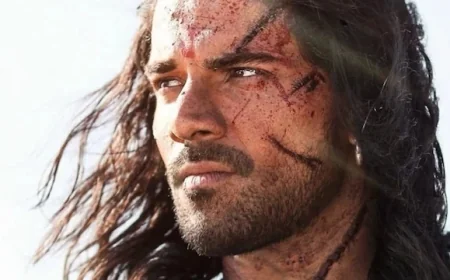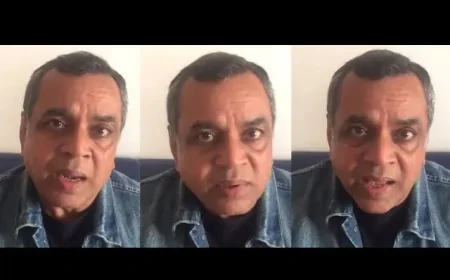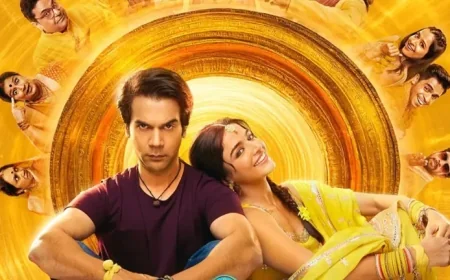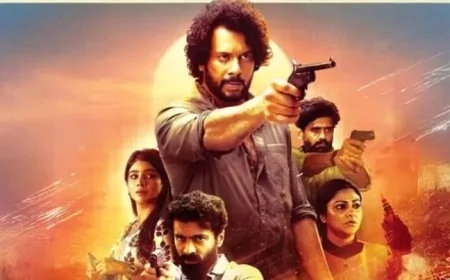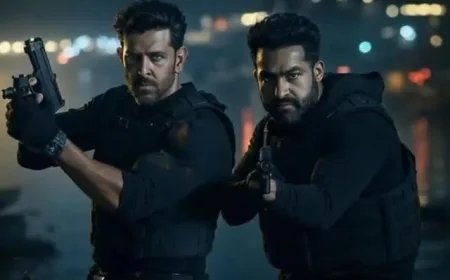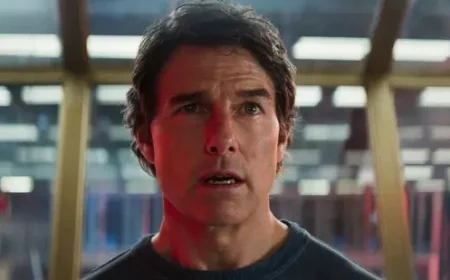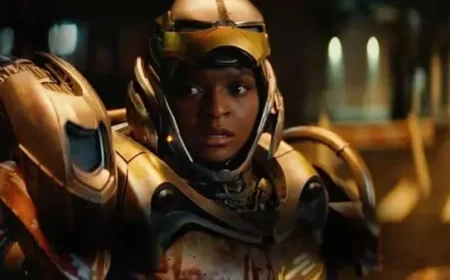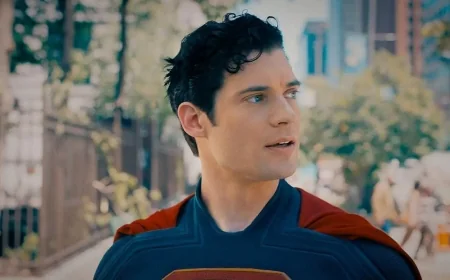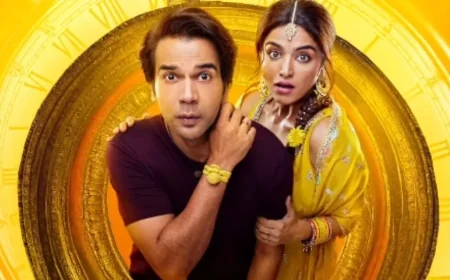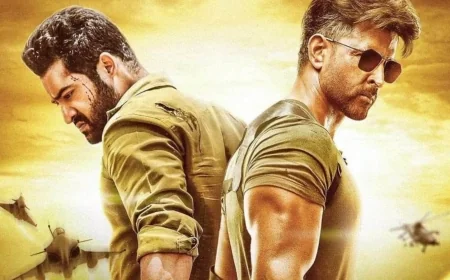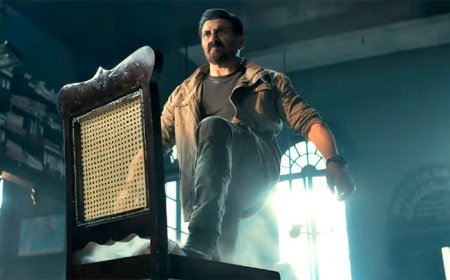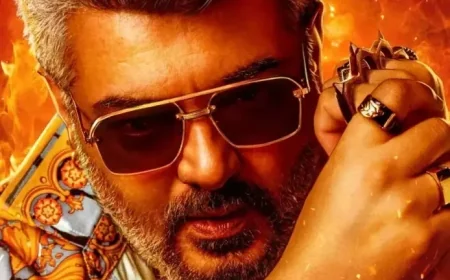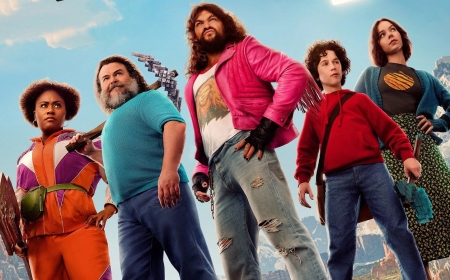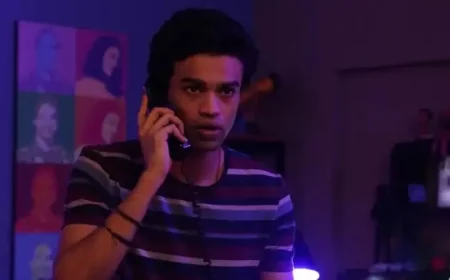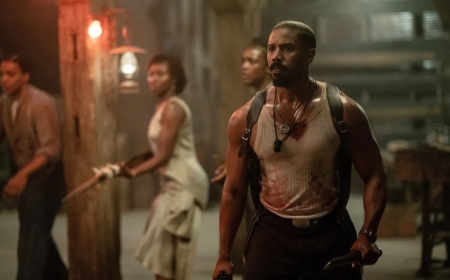Mission Impossible Delivers a Thrilling Ride
An in-depth review of the latest Mission Impossible film, analyzing its strengths and weaknesses. This article examines the plot, action sequences, and Tom Cruise's performance.

Mission Impossible: Dead Reckoning Part One - A Cinematic Spectacle
The Mission Impossible franchise has been a cornerstone of action cinema for nearly three decades, with Tom Cruise at the helm as the indomitable Ethan Hunt. The latest installment, "Mission Impossible: Dead Reckoning Part One," continues this legacy with a mix of high-octane action and intricate storytelling. Let's dive into what makes this film tick and where it falls short.
The Plot: A Race Against Time
The film's premise is familiar yet compelling. The world is on the brink of destruction, with a looming threat of nuclear attacks that could potentially wipe out humanity. A 100-hour countdown sets the stage for a tense, high-stakes mission. What sets this plot apart is the intriguing twist - the possibility that our hero, Ethan Hunt, might be the catalyst for this impending doom.
The narrative introduces a new, unseen antagonist - advanced technology that seems to be pulling the strings behind the scenes. This invisible force manipulates events and even Ethan Hunt himself, adding a layer of complexity to the story.
Tom Cruise: The Heart of the Franchise
Tom Cruise's dedication to the role of Ethan Hunt is undeniable. His commitment to performing his own stunts and pushing the boundaries of action filmmaking is evident throughout the movie. However, this installment sees Cruise slightly falling short of the incredibly high bar he's set in previous films.
Despite this, Cruise's screen presence remains magnetic. His portrayal of Ethan Hunt continues to be the driving force of the franchise, blending intensity, charm, and vulnerability in equal measure.
Action Sequences: A Mixed Bag
The film boasts several action set pieces, with varying degrees of success:
-
Underwater Mission: One of the most unique aspects of the film is an underwater sequence. While the concept is innovative, the execution falls slightly short of expectations. The scene, which occupies 10-15 minutes of screen time, lacks the memorable moments that have defined previous Mission Impossible action sequences.
-
Aerial Stunts: As expected, the film features Cruise performing death-defying aerial stunts. These sequences, while impressive, don't quite reach the heights (pun intended) of previous installments.
-
Ground-based Action: The film's terrestrial action scenes are competently executed but lack the wow factor that audiences have come to expect from the franchise.
Supporting Cast: Underutilized Potential
One of the film's weaknesses lies in its treatment of supporting characters. The ensemble cast, which has been a strength of previous Mission Impossible films, feels somewhat sidelined in this installment. This diminishes the emotional core of the story, as the relationships between characters have always been a key element in balancing the high-octane action.
The Antagonist: A Missed Opportunity
Perhaps the most significant flaw in "Dead Reckoning Part One" is the lack of a strong, tangible antagonist. While the concept of an AI-driven threat is intriguing, it doesn't translate well to the screen. The film lacks a charismatic villain to challenge Ethan Hunt physically and intellectually, which has been a hallmark of the best entries in the series.
The absence of a formidable human antagonist reduces the tension and personal stakes that have made previous Mission Impossible films so engaging.
Production Values: A Visual Feast
With a reported budget of nearly 4000 crore rupees (approximately $500 million), the film's production values are unsurprisingly top-notch. The cinematography is crisp, the set pieces are elaborate, and the special effects are seamless. The film's visual language is consistent with the high standards set by its predecessors.
Franchise Continuity: A Double-Edged Sword
"Dead Reckoning Part One" serves as both a continuation and a potential conclusion to storylines that have been developing since the franchise's inception in 1996. For long-time fans, this provides a sense of closure and rewards their investment in the series.
However, this focus on tying up loose ends may alienate newcomers to the franchise. The film relies heavily on viewers' familiarity with previous installments, which could limit its appeal to a broader audience.
Pacing and Structure: A Straightforward Approach
Unlike some of the more convoluted entries in the series, "Dead Reckoning Part One" follows a relatively straightforward narrative structure. While this makes the film easier to follow, it also reduces the sense of unpredictability and tension that has characterized the best Mission Impossible movies.
The film's pacing is generally good, keeping the audience engaged throughout its runtime. However, some may find that the lack of significant plot twists or unexpected challenges for the protagonists reduces the overall excitement.
The Future of the Franchise
Despite being billed as potentially the last installment, the film's ending leaves room for future entries in the series. Given Tom Cruise's continued enthusiasm for the role and the franchise's enduring popularity, it seems likely that we haven't seen the last of Ethan Hunt.
There are hints that future installments might push the boundaries even further, with rumors of potential space-based sequences. This ambition is emblematic of the franchise's commitment to continually raising the stakes and delivering unprecedented spectacle.
Verdict: A Solid Entry, But Not the Series' Best
"Mission Impossible: Dead Reckoning Part One" is a competent addition to the franchise that will satisfy long-time fans but may not win over new audiences. Here's a breakdown of its strengths and weaknesses:
Strengths:
- Tom Cruise's committed performance and screen presence
- High production values and visual spectacle
- An intriguing premise involving AI and global threats
- Continuity and closure for long-time fans
Weaknesses:
- Lack of a strong, charismatic antagonist
- Underutilized supporting cast
- Action sequences that don't quite live up to the series' high standards
- Heavy reliance on familiarity with previous installments
In conclusion, "Mission Impossible: Dead Reckoning Part One" is a must-watch for fans of the franchise and Tom Cruise enthusiasts. For casual viewers or newcomers to the series, it may be worth tempering expectations. The film delivers on spectacle but falls short in delivering the emotional depth and nail-biting tension that have defined the best entries in the series.
As we look to the future of the Mission Impossible franchise, one thing is certain: Tom Cruise and his team will continue to push the boundaries of action filmmaking. Whether in the depths of the ocean, the heights of the stratosphere, or potentially the vastness of space, Ethan Hunt's next mission is sure to be as impossible - and as thrilling - as ever.
Also Watch: Final Destination: Blood Lines Is Terrifying!
The Impact of Mission Impossible on Action Cinema
A Legacy of Innovation
The Mission Impossible franchise has consistently set new standards for action filmmaking since its inception. Each installment has introduced innovative stunts and cinematography techniques that have influenced the broader action genre.
Key Innovations:
- Practical effects over CGI
- Real locations instead of studio sets
- Actor-performed stunts
- Integration of cutting-edge technology into plot and action sequences
Tom Cruise: The Last Action Hero
In an era dominated by CGI-heavy superhero films, Tom Cruise stands out as one of the last traditional action stars. His commitment to performing his own stunts has become a unique selling point for the Mission Impossible franchise.
Cruise's Impact:
- Raised the bar for actor involvement in action sequences
- Brought authenticity to high-stakes scenes
- Inspired a new generation of actors to take on more physical roles
The Evolution of Ethan Hunt
Over the course of the franchise, Ethan Hunt has evolved from a skilled agent to an almost superhuman figure. This evolution reflects changing audience expectations and the escalating nature of action cinema.
Character Development:
- Increased focus on Hunt's personal life and relationships
- Exploration of the toll of espionage on individual agents
- Balancing Hunt's almost superhuman abilities with human vulnerabilities
The Supporting Cast: An Ensemble Approach
While Cruise is undoubtedly the star, the Mission Impossible films have benefited from strong supporting casts. This ensemble approach has added depth to the narratives and provided necessary contrast to Hunt's character.
Notable Supporting Characters:
- Luther Stickell (Ving Rhames)
- Benji Dunn (Simon Pegg)
- Ilsa Faust (Rebecca Ferguson)
The Importance of Practical Effects
In an age of CGI dominance, the Mission Impossible franchise's commitment to practical effects and real stunts sets it apart. This approach adds a layer of authenticity and excitement that resonates with audiences.
Benefits of Practical Effects:
- Creates a sense of real danger and excitement
- Allows for more dynamic and immersive action sequences
- Appeals to audiences fatigued by CGI-heavy blockbusters
Global Locations: A World Tour of Espionage
The franchise has used its international settings not just as backdrops, but as integral parts of the story. This global approach has broadened the series' appeal and allowed for diverse and spectacular set pieces.
Notable Locations:
- Dubai's Burj Khalifa
- Vienna State Opera
- Paris streets
- Kashmir mountains
Music: A Crucial Element
The iconic Mission Impossible theme, composed by Lalo Schifrin, has been a constant throughout the series. Each film's score builds on this theme, creating a musical identity that's instantly recognizable.
Musical Highlights:
- Adaptation of the original theme for each installment
- Use of music to build tension and excitement
- Integration of score with action sequences
The Influence on Spy Fiction
The Mission Impossible films have had a significant impact on the spy thriller genre, influencing everything from plot structures to gadgetry.
Genre Innovations:
- High-tech gadgets grounded in plausible technology
- Complex, multi-layered plots
- Blend of espionage and action elements
The Challenge of Maintaining Relevance
As the franchise approaches its 30th year, it faces the challenge of staying relevant in a changing cinematic landscape. "Dead Reckoning Part One" attempts to address this by incorporating themes of AI and technological threats.
Strategies for Relevance:
- Addressing contemporary global issues
- Incorporating cutting-edge technology into plots
- Evolving character relationships and motivations
The Future of Mission Impossible
While "Dead Reckoning Part One" was rumored to be the beginning of the end for the franchise, the film's reception and Tom Cruise's continued enthusiasm suggest there may be more missions to come.
Potential Future Directions:
- Space-based sequences
- Deeper exploration of AI and technological threats
- Passing the torch to a new generation of IMF agents
Conclusion: The Impossible Dream Continues
"Mission Impossible: Dead Reckoning Part One" may not be the pinnacle of the franchise, but it represents the ongoing ambition and spectacle that have defined the series. As long as there are impossible missions to undertake, it seems Tom Cruise and his team will be there to accept them, pushing the boundaries of action cinema and thrilling audiences worldwide.
While the film has its flaws, particularly in its antagonist and the utilization of its supporting cast, it continues the tradition of high-octane action and complex espionage that fans have come to expect. For those who have followed Ethan Hunt's journey from the beginning, "Dead Reckoning Part One" offers a satisfying continuation of the saga, even if it doesn't quite reach the heights of the franchise's best entries.
As we look to the future, the Mission Impossible franchise stands as a testament to the enduring appeal of practical effects, star power, and globe-trotting adventure in modern cinema. Whether this is truly the beginning of the end or merely the setup for even greater missions to come, one thing is certain: the impossible dream of creating ever more thrilling and spectacular action films lives on.
What's Your Reaction?
 Like
0
Like
0
 Dislike
0
Dislike
0
 Love
0
Love
0
 Funny
0
Funny
0
 Angry
0
Angry
0
 Sad
0
Sad
0
 Wow
0
Wow
0
